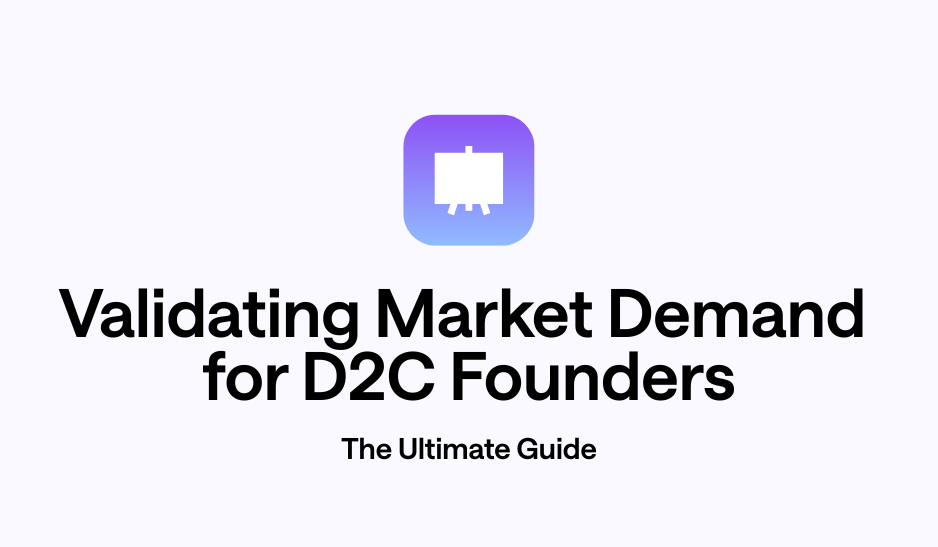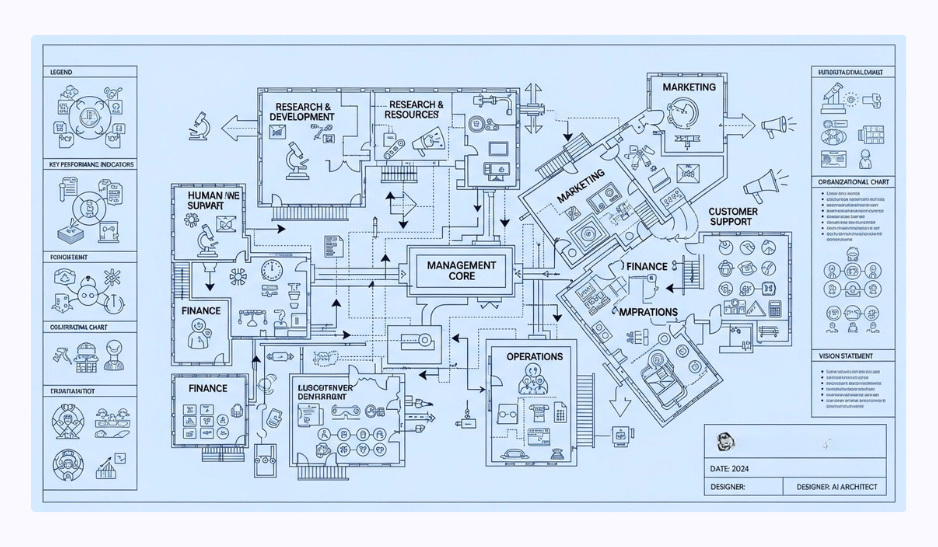A Founder's Guide to Startup Launch Tactics
You’ve spent countless hours bringing your idea to life. Your product is built, polished, and ready. Now comes the most critical phase: the launch. This is the moment that separates a great product from a great business, and it’s where a surprising number of startups stumble. They mistake the finish line of development for the starting line of the market.
A successful launch isn’t a single event; it's a meticulously planned campaign. Getting it right requires a deliberate strategy that builds momentum before, during, and after you go live. This guide provides a structured framework for that campaign, breaking it down into three critical phases to turn your product into a market presence.
Phase 1: The Pre-Launch Strategy
This is where most of the work happens. A powerful launch is 90% preparation and 10% execution. Rushing this stage is not an option.
Know Your 'Who' and 'Why'
Before you can tell the world about your product, you need to know exactly who you're talking to and what you should say.
-
Deeply Understand Your Audience: "Everyone" is not a target market. You need to get uncomfortably specific. Go beyond basic demographics and build out detailed customer personas.
Who is your ideal user?
What does their day look like?
What podcasts do they listen to?
What are the deep, nagging problems that keep them up at night?
Give them names, job titles, and motivations. This isn't a creative writing exercise; it's the foundational document for every marketing decision you'll make.
-
Nail Your Value Proposition: You’re close to your product, so you see all its features. Your customers won't. They see a solution to a problem. Clearly articulate what problem you solve and why your solution is better, faster, or more effective than any alternative. A great framework is to define the "job" your customer is "hiring" your product to do. Is it to save them time? Make them more money? Reduce their anxiety? Your messaging must center on this core value, not on a list of features.
Craft a Compelling Narrative
Facts tell, but stories sell. Your launch needs a narrative that resonates with your audience on an emotional level.
-
The Brand Story: Why did you build this? What change do you want to see in the world? People connect with purpose. Weave this into a simple, powerful story that frames your company as the guide and your customer as the hero. This narrative will be the source code for your website copy, your social media posts, and your investor pitches.
-
Market Intelligence: Strategy requires data, not just intuition. Before launch, you must understand the landscape.
-
Competitor Analysis: Identify your direct and indirect competitors. Analyze their strengths, weaknesses, and market positioning. Where are the gaps? What can you do that they can't? This analysis will define your unique space in the market.
-
Market Sizing: You need to quantify your opportunity. Understand your Total Addressable Market (TAM), Serviceable Available Market (SAM), and Serviceable Obtainable Market (SOM). This isn't just for pitch decks; it forces you to be realistic about who you can reach and helps you focus your resources effectively.
-
Build an Audience Before You Launch
The worst time to start looking for customers is on launch day. The goal is to launch to an audience, not for one.
-
The Landing Page: Set up a simple "coming soon" page. It should contain your core value proposition and one crucial element: an email signup form. Give people a reason to sign up—offer early access, a lifetime discount, or a valuable free resource. This is your first audience. Treat them like gold.
-
Share Value, Not Hype: Start creating content that helps your target audience, even before they can use your product. Write blog posts, start a newsletter, or share insights on social media about the problem you solve. If you're building a project management tool, share articles on productivity. If you're building a design tool, share tips on visual hierarchy. This establishes your expertise and builds trust.
-
Engage Authentically: Find the online communities where your ideal customers hang out. This could be Reddit, LinkedIn Groups, Slack communities, or specific forums. Don't just show up on launch day and spam your link. Become a valued member. Answer questions, offer help, and share your journey. Build social capital long before you ask for anything in return.

Phase 2: Executing a Coordinated Launch Day
If you’ve done the pre-launch work, launch day is less about hope and more about execution. It's about pulling the levers you’ve already set up.
Choose Your Launch Platform
A single, focused launch event often works better than a scattered approach.
-
Product Hunt: For many tech products, a Product Hunt launch is a rite of passage. It can drive significant early traffic, feedback, and users. Success requires preparation: securing a good "hunter," preparing your assets (images, video, first comment), and rallying your network to support you on the day.
-
Niche Communities: Sometimes the best launch is a targeted one. If you've built a tool for AI developers, launching on a platform like Hacker News or in a specific developer-focused subreddit might be more effective than a broad launch. You’re going where the fish are.
-
PR & Media Outreach: If your product has a broader appeal or a strong human-interest angle, a press launch can be powerful. This involves building a targeted list of journalists, crafting a concise and compelling pitch, and providing them with an easy-to-use press kit.

The Launch Day Checklist
Ensure all systems are go before you hit the button.
-
Website & Onboarding: Is your site live and bug-free? Is the signup process smooth and intuitive?
-
Support Channels: Have a plan to handle inquiries. This could be a simple email address, a chat widget, or a dedicated support page. Be ready to respond quickly.
-
Analytics: Make sure your analytics tools (like Google Analytics, Mixpanel, etc.) are installed and working correctly. You need to be able to measure everything from day one.
Amplify the Signal
On launch day, your job is to be the conductor of your orchestra.
-
Coordinate Your Channels: Announce your launch simultaneously across all your platforms. Send an email to your pre-launch list, post on your social media accounts, and share the news in the communities you've been nurturing.
-
Engage, Engage, Engage: Don't just post and walk away. Spend the entire day responding to comments, answering questions, thanking people for their support, and listening to feedback. Your presence and responsiveness build crucial early momentum.
Phase 3: Sustaining Momentum After Day One
The launch isn't the finish line; it's the starting gun. The days and weeks that follow are arguably more important than launch day itself.
Listen, Learn, Iterate
You now have the most valuable resource of all: real user feedback.
-
Obsess Over Feedback: Actively solicit feedback through surveys, emails, and direct conversations. Watch how people are actually using your product through analytics. Where do they get stuck? What features do they ignore? What do they love?
-
Close the Loop: When you fix a bug or build a feature that a user suggested, tell them. Showing your users that you are listening is one of the most powerful ways to build a loyal community. This creates a flywheel of feedback and improvement that will become your core competitive advantage.
Turn Buzz into a Business
The initial launch spike will fade. Your next goal is to build a sustainable system for growth.
-
Analyze Your Launch: Dig into the data. Which channel drove the most valuable signups? Was it Product Hunt, a specific blog post, or a Reddit comment? Double down on what worked.
-
Nurture Your Users: Don’t let your new users wither on the vine. Create a simple email onboarding sequence that helps them achieve their first "aha!" moment with your product as quickly as possible.
-
Explore Paid Channels (Strategically): Once you have validated your messaging and understand your ideal customer profile, you can begin to experiment with paid advertising. Use the deep psychographic insights from your persona research to build highly targeted ad campaigns on platforms like Meta or Google. Start with a small budget and scale what works.
The launch is a process, not an event. It starts long before day one and continues long after. By moving from a "build it and they will come" mindset to a strategic, audience-first approach, you transform your launch from a hopeful gamble into a calculated and powerful step forward.
The perfect launch doesn't exist, but a strategic one does. Stop guessing, start planning, and get ready for liftoff. 🚀


